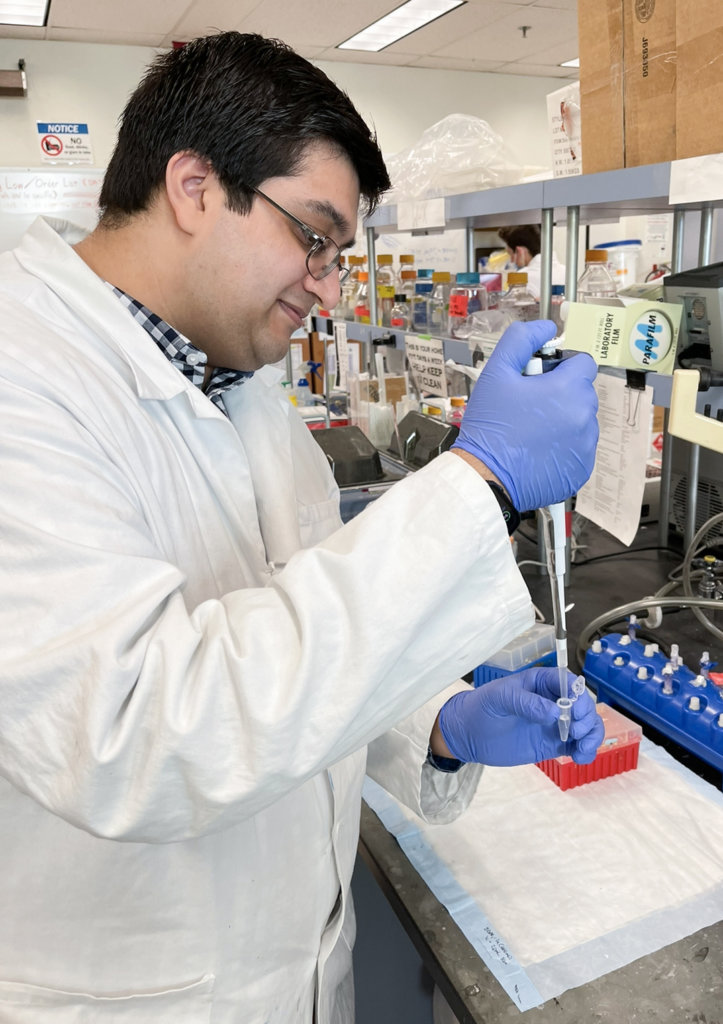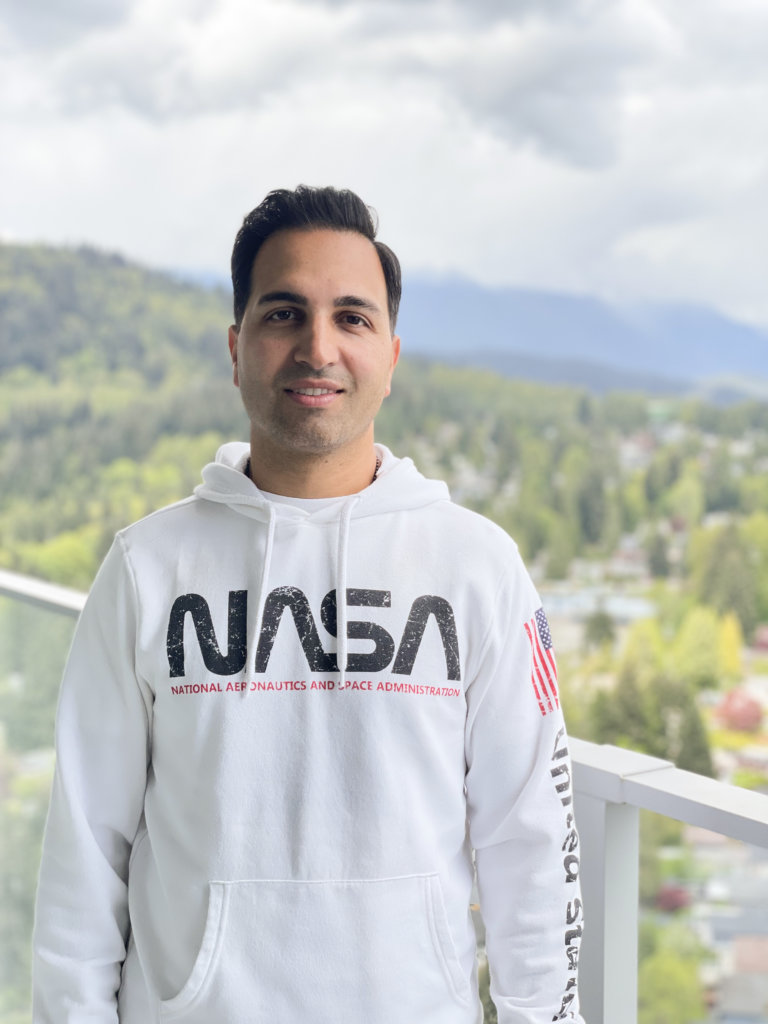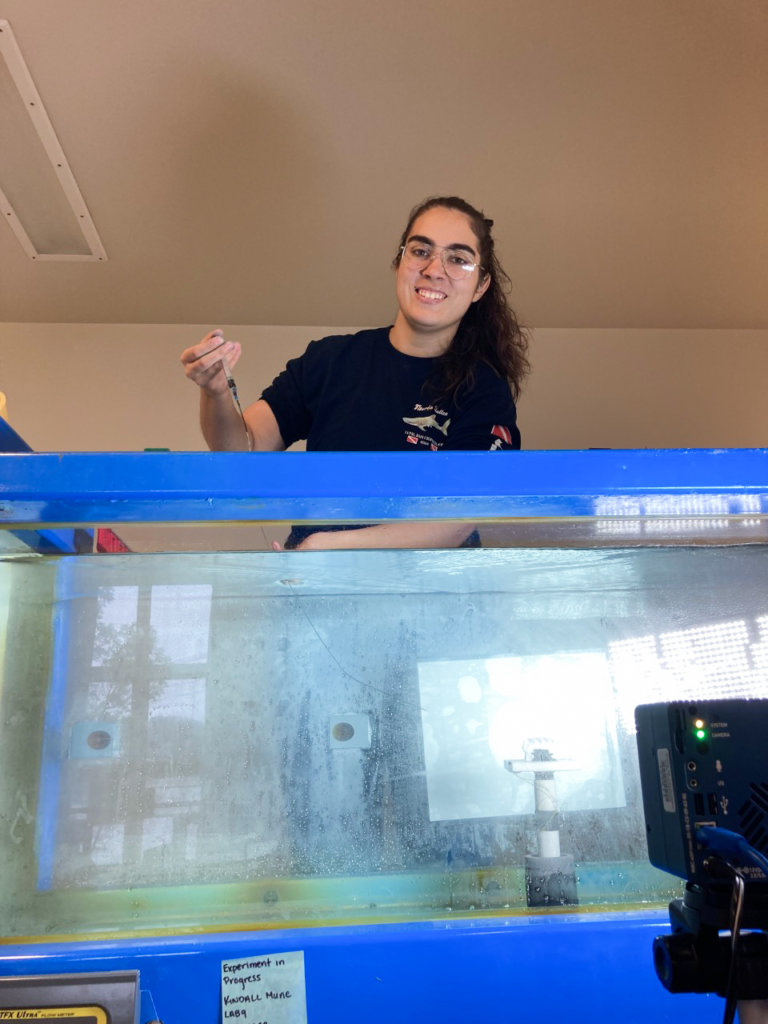
High-speed machining, manta rays and active matter were among the topics Cal State Fullerton student researchers presented at the 36th annual California State University Student Research Competition.
Hosted virtually last month by San Francisco State University, the annual competition features top undergraduate and graduate scholarly research throughout the 23 CSU campuses. Eight CSUF students were recognized as finalists. Out of those eight, two students won first-place awards and two won second-place awards.
“Participating in the Student Research Competition is no joke – it’s hard work,” said Terri Patchen, professor of elementary and bilingual education and faculty fellow for Student Creative Activities and Research. “But the rewards are immeasurable; student confidence, presentation clarity, and communication skills increase — and their understanding of their work deepens tremendously.”
Students were required to submit a prerecorded eight-minute research presentation and respond to juror and audience questions during a live virtual session.
CSUF Student Research Competition Winners

Azeem Horani, undergraduate, biochemistry
Project title: “Identification and Characterization of Nuclear Export Sequences in Polypyrimidine Tract Binding Protein 1”
First Place: Biological and Agricultural Sciences – Undergraduate
Faculty mentor: Niroshika Keppetipola, associate professor of chemistry and biochemistry
Description of student: Horani is a fourth-year undergraduate majoring in biochemistry. Horani plans to earn a master’s degree in biochemistry before pursuing a doctorate to teach university students.
Research focus: He is studying polypyrimidine tract binding protein 1 (PTBP1), responsible for regulating mRNA. The researchers want to better understand how PTBP1 transports from the cell’s nucleus to the cell’s cytoplasm and vice versa. A previous study showed that when a specific region of PTBP1 is deleted (RNA recognition motif 2), it traps PTBP1 in the nucleus, unable to enter the cytoplasm. The researchers suspected that particular sequences within the RRM2 were responsible for cellular localization.
Why this research is important: Keppetipola’s research lab focuses on studying RNA binding proteins involved in the central dogma of biology. It works to regulate the lives of every living organism. A better understanding of this process can help lead to treatments for countless diseases and ailments. The polypyrimidine tract binding proteins they are studying are also involved in neurological development. The research could eventually be applied to treat neurodegenerative diseases like Alzheimer’s disease, frontotemporal dementia, Parkinson’s disease and more.
Mauricio Gomez Lopez, undergraduate, physics and mathematics

Project title: “Studying the Material Properties of an Active Suspension of Swimming Bacteria”
First Place: Physical and Mathematical Sciences – Undergraduate
Faculty mentor: Wylie Ahmed, associate professor of physics
Description of student: Gomez Lopez, a native of Mexico and a member of the “Dreamers” – a group of young immigrants brought into the U.S. as children and protected from deportation under the Deferred Action for Childhood Arrivals program – is a graduating senior double majoring in physics and mathematics. After graduating, he will enter Cal State Fullerton’s graduate physics program this fall. His goal is to pursue a doctorate in physics.
Research focus: This research aims to understand how active matter, an interdisciplinary field that studies the complex interactions between moving interacting objects, violates several assumptions about energy flow in the area of thermodynamics. This could lead to the eventual creation of living material used in self-repairing roads, batteries powered by swimming bacteria or microbots for targeted drug delivery.
Why this research is important: Studying active matter like bacterial movement can lead to engineering microscopic robots capable of moving themselves and fitting into roles such as targeted drug delivery. Additionally, the research found that E.coli suspension can transfer energy, making it a viable energy source.
Mehrshad Mazaheri, graduate, mechanical engineering

Project title: “High-Speed Machining of 2219 Aluminum Utilizing Nanoparticle-Enhanced MQL Lubrication”
Second Place: Engineering and Computer Science
Faculty mentor: Sagil James, associate professor of mechanical engineering
Description of student: Mazaheri is a graduate student in mechanical engineering who will earn a master’s degree in May 2022. Mazaheri’s goal is to land an engineering position before pursuing a doctorate degree.
Research focus: His research investigates the surface finish roughness of the workpiece and the heat generated during the high-speed cutting process when nanoparticle lubricant was used. These two parameters were also evaluated under different nanoparticle concentration lubricants utilizing the minimum quantity lubricant (MQL) technique.
Why this research is important: This research investigates aluminum for space applications. Although there are challenges with machining the alloy, it offers superior benefits for space applications. Researching an innovative solution can also address the environmental impact of the coolant while saving coolant costs, allowing it to become immediately adopted by the industry.
Julia Teeple, undergraduate, ecology and evolution

Project title: “Analyzing Flow Using Accurate Manta Anatomy”
Second Place: Biological and Agricultural Sciences – Undergraduate
Faculty mentor: Misty Paig-Tran, associate professor of biological science
Description of student: Teeple is a 2021 biological science graduate who studied ecology and evolution. She plans to continue research with Paig-Tran and pursue a master’s degree in biology at CSUF.
Research focus: The Paig-Tran lab used simplistic physical models based on generalized mobula filter anatomy to investigate how a manta ray’s leaf-like filter works. This initial study suggests that mobula filters operate through a unique solid-fluid separation mechanism, now known as ricochet separation. This early investigation looked at how this non-clogging filter may be functioning.
Why this research is important:Through evolution, many plants and animals have developed some incredible adaptations to different situations. This study presents the first detailed visual records of morphological variation between mobula filter structures using CT scans. These CT scans were used to create biologically accurate physical models of mobula filters to investigate flow regimes that dictate filtration performance. Understanding how animals function has the potential to inspire human-engineered systems with natural-occurring systems.